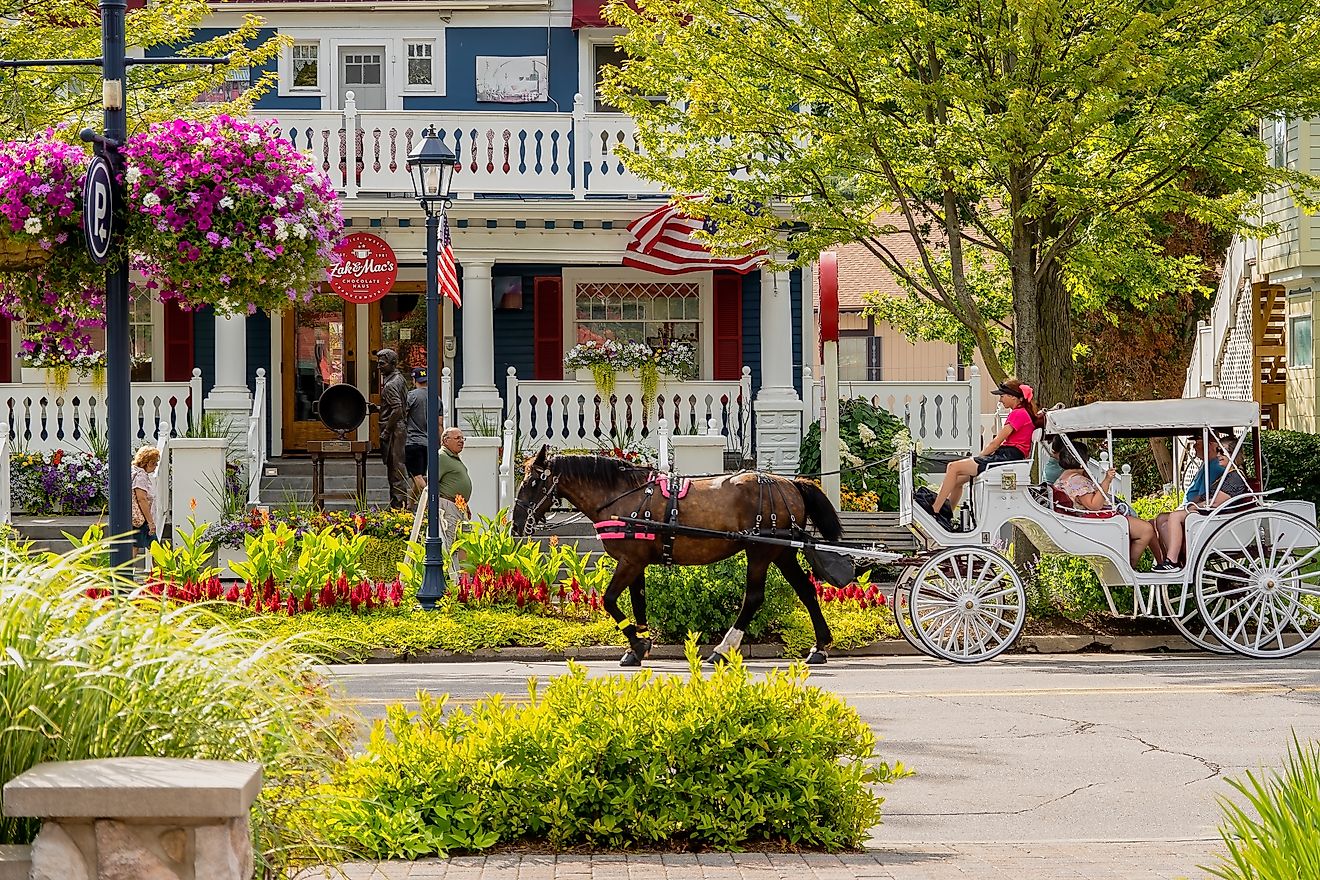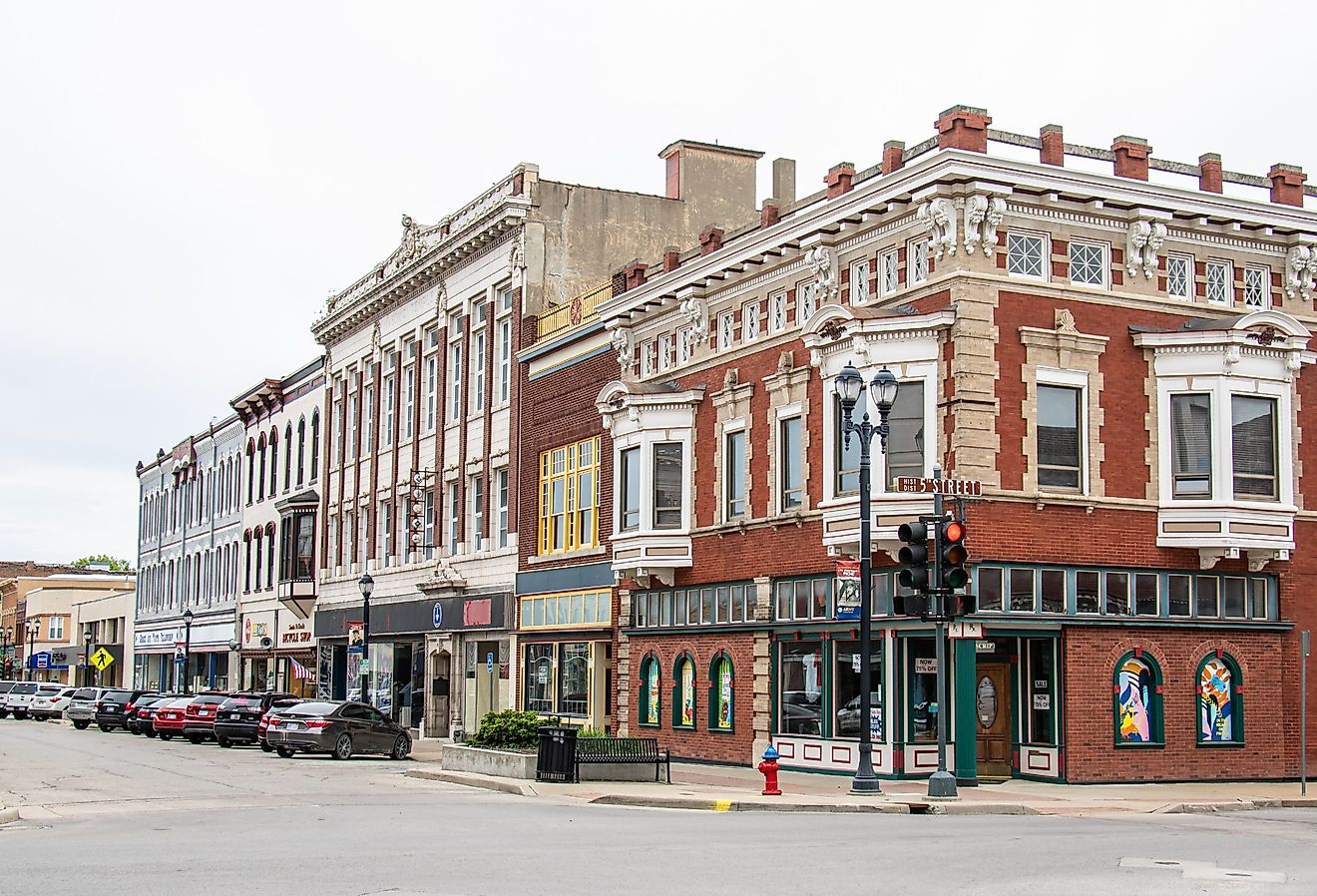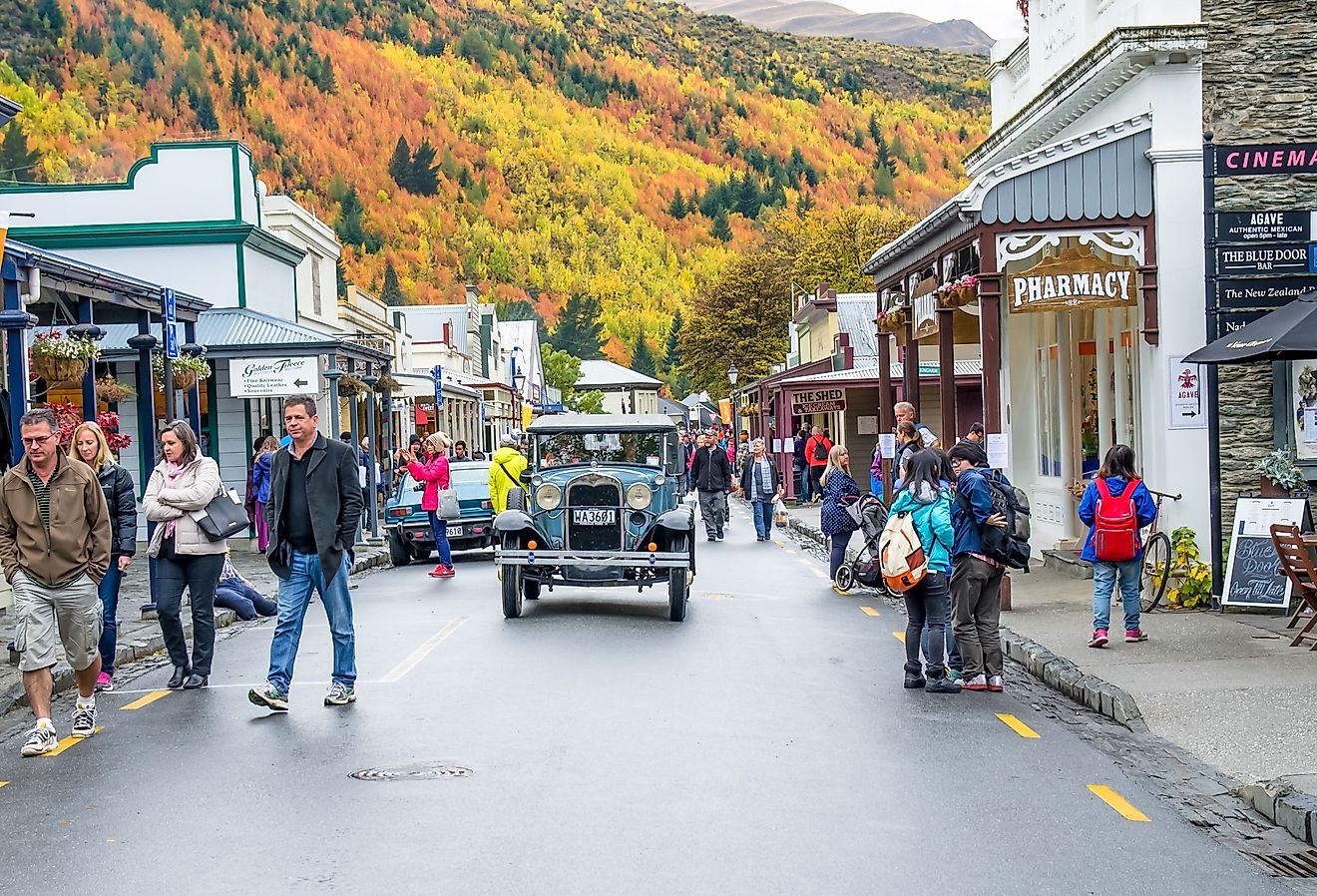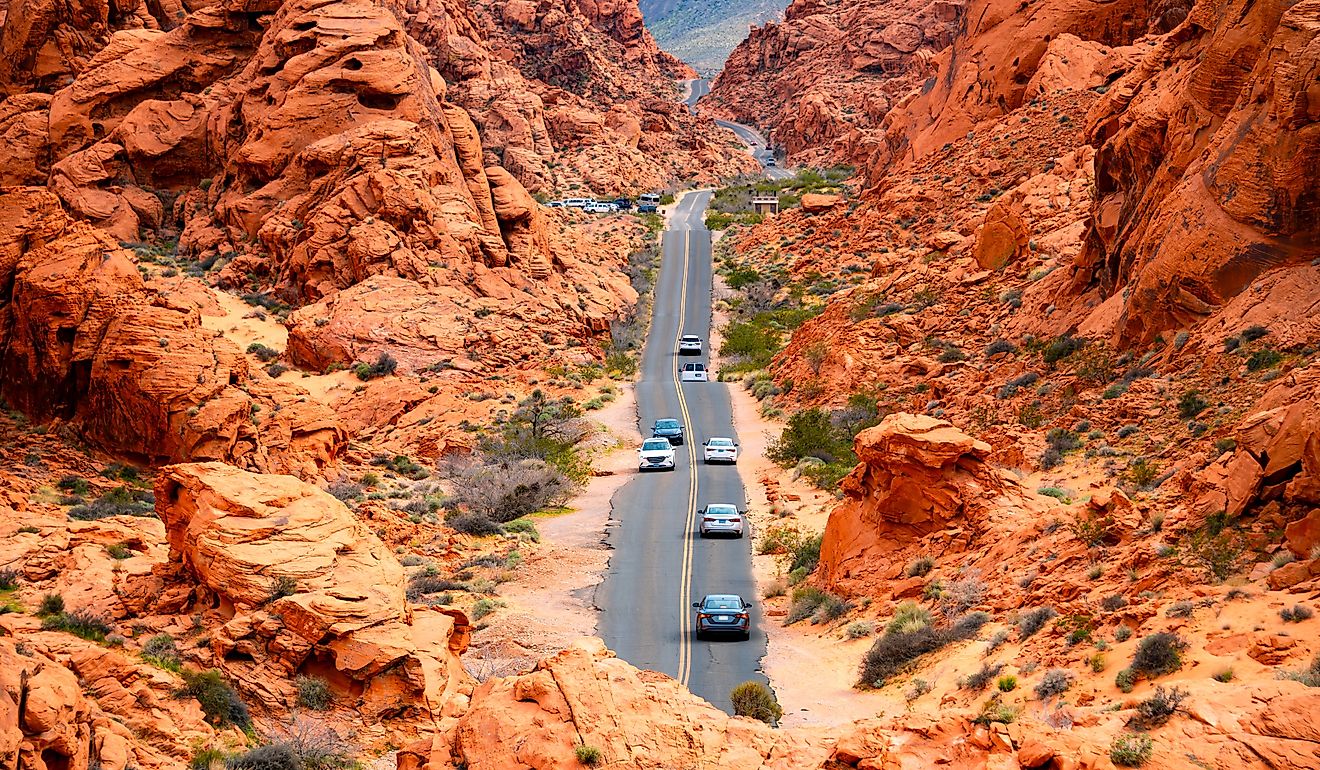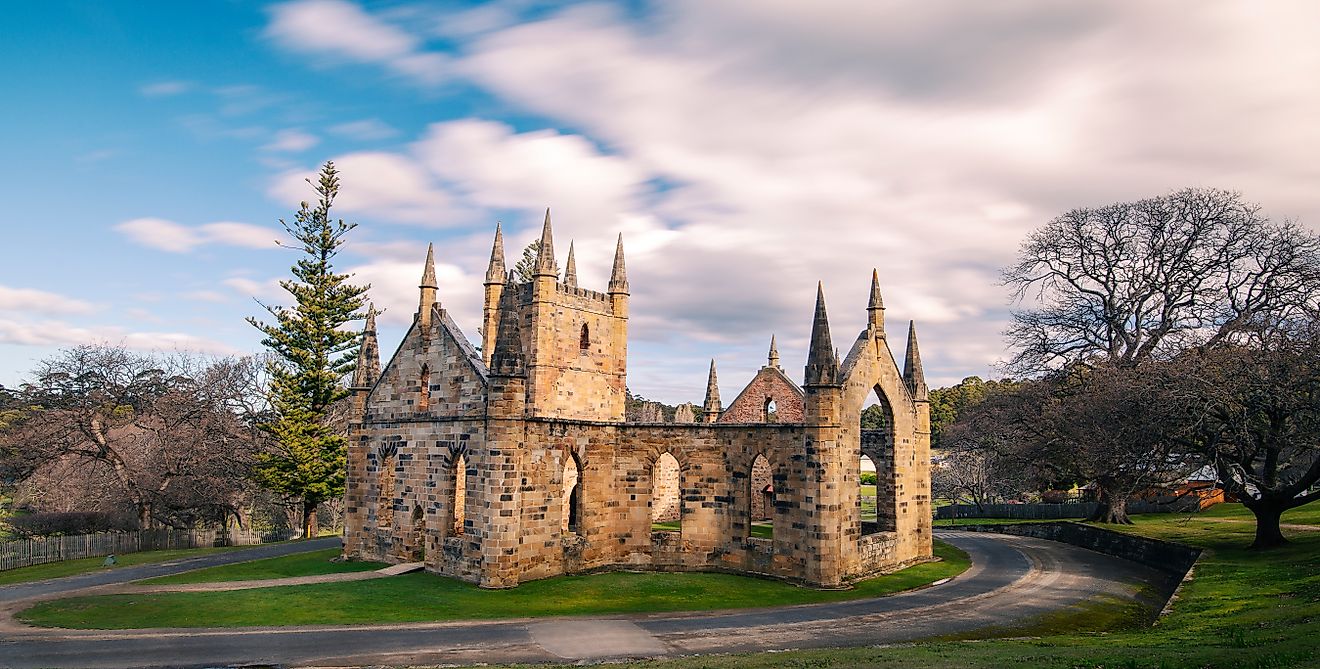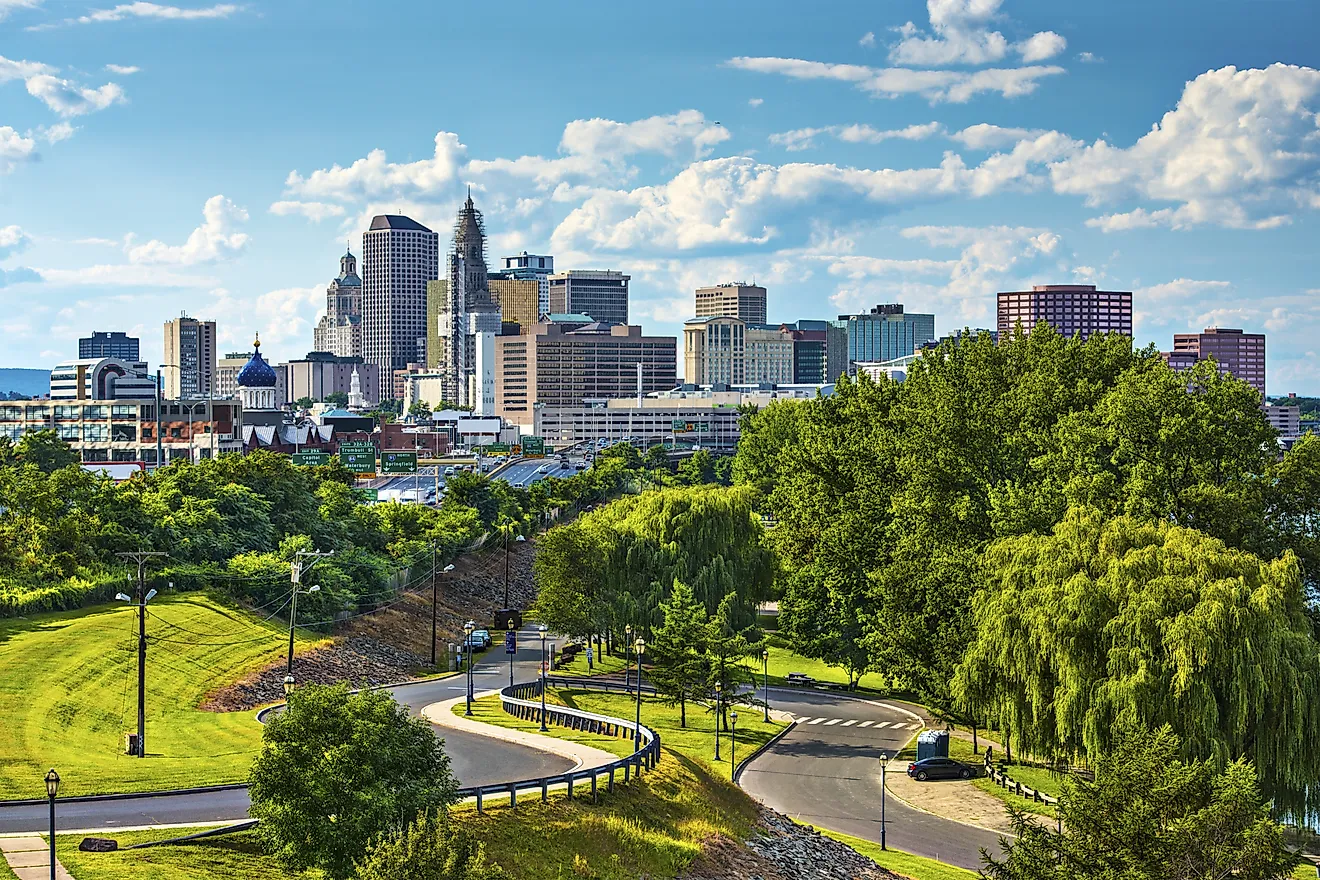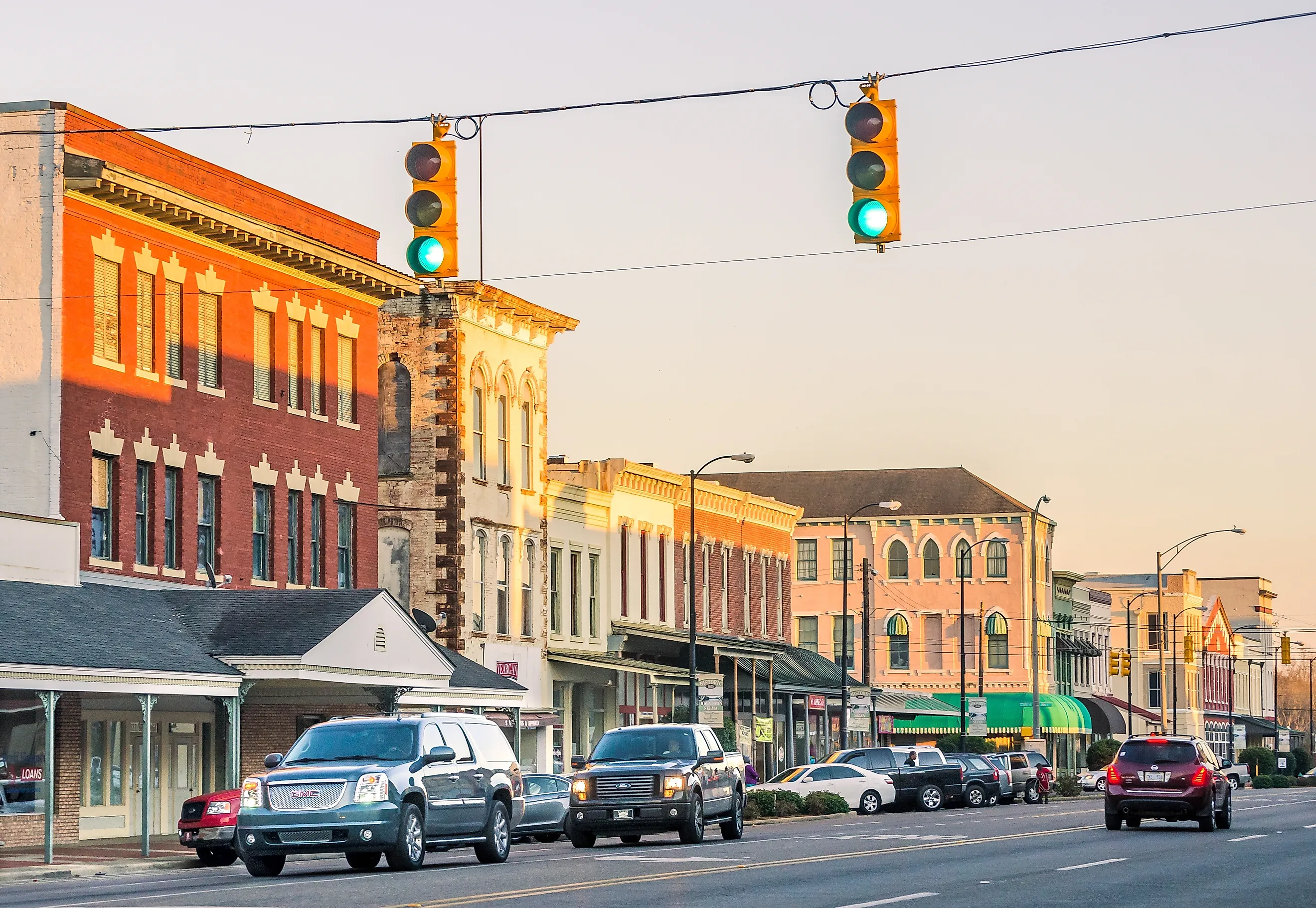
8 Most Charming Small Towns In Alabama
Belonging to the Cherokee, Creek, Choctaw, and Chickasaw peoples, who are historically linked to the Deep South, Alabama carries an easy southern charm that threads through its towns and waterways.
Many communities across the Yellowhammer State look adorable at first glance. These selections bring that appeal into focus with varied backdrops, from the soft beaches along the Gulf of Mexico to quiet corners near the Appalachian Mountains.
Museums preserve stories of long struggles for voting rights, and local exhibits trace creatures that lived millions of years ago. History appears in each column and cornice, giving every town its own clear identity.
Across Alabama, these towns guide visitors along streets and shores that energize, entertain, and stay in memory.
Selma
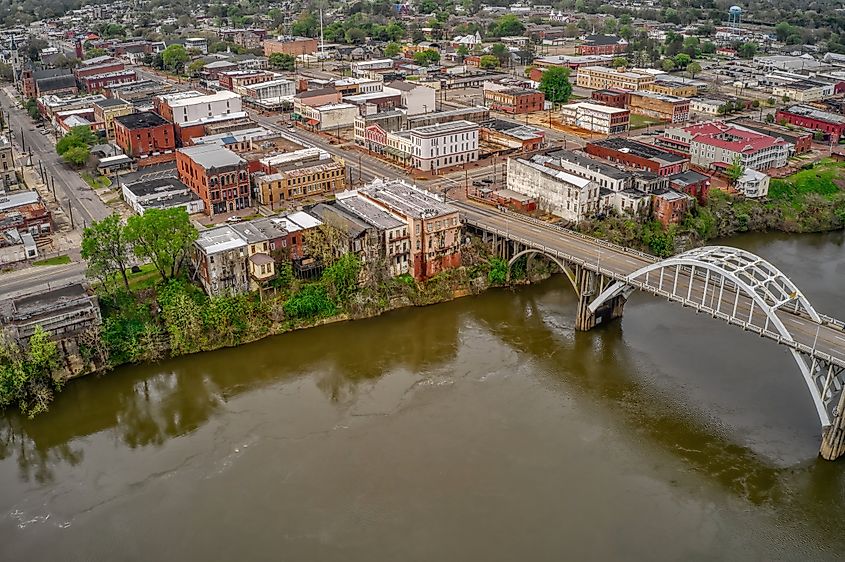
The Alabama River curves through Selma, where nineteenth-century architecture forms a visual timeline along its streets. The Old Town Historic District, the largest in the state, gathers hundreds of buildings from the period across a 323-acre area.
Greek Revival columns support porticos on antebellum homes, while Italianate facades and Carpenter Gothic trim appear on Victorian cottages throughout Fairoaks Square. Nearby, Historic Riverfront Park follows the river bend, with concrete paths that overlook the Edmund Pettus Bridge.
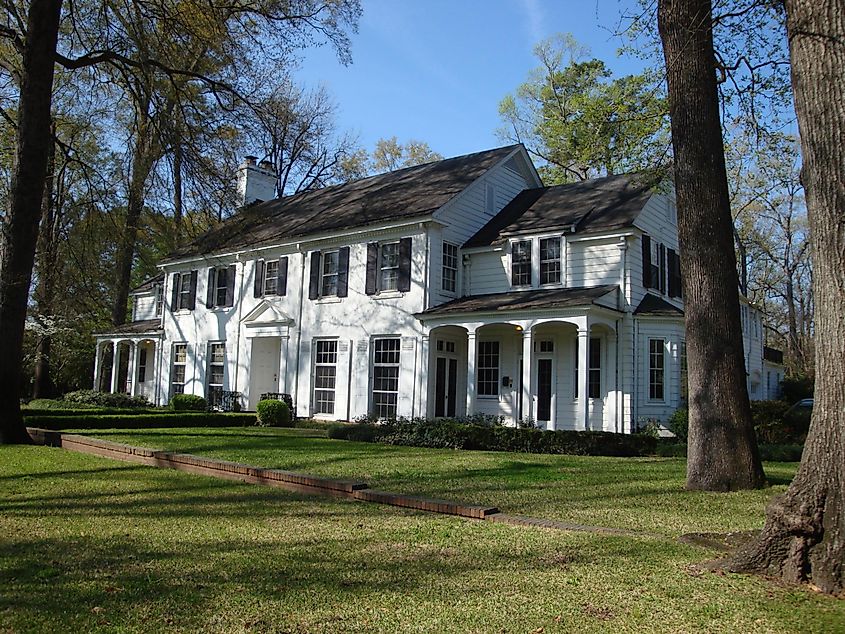
The Old Depot Museum fills a red-brick railroad depot with artifacts that span from prehistoric times through the civil rights era. Bills of sale for enslaved people, WPA murals, and photographs documenting the Bloody Sunday incident line the displays. Antique railcars and a Victorian firehouse preserve early transportation history.
Sturdivant Hall shows Greek Revival design with interiors marked by Italian marble and plaster detailing. The Vaughan-Smitherman Museum brings new life to a Greek Revival building that once served as a Masonic school, Confederate hospital, county courthouse, and later a hospital. Annual events, including the Bridge Crossing Jubilee, highlight the city's role in the fight for voting rights.
Mountain Brook

An upscale Birmingham suburb, Mountain Brook takes its name from the wooded terrain and small waterways that shape the area. The Birmingham Zoo contains hundreds of animals across many species, including African elephants in the Trails of Africa habitat, reticulated giraffes in the Kiwanis Giraffe Encounter, and rhinos in a dedicated enclosure.
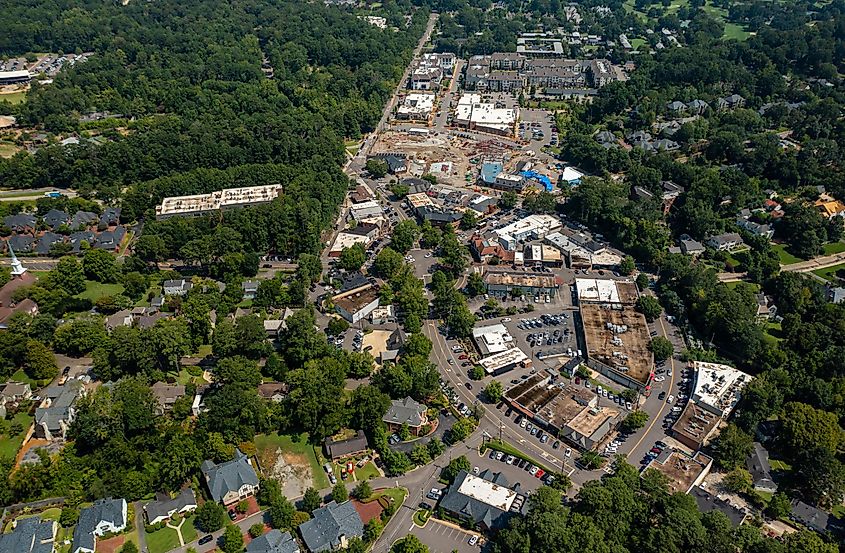
The Birmingham Botanical Gardens open daily across nearly seventy acres. The Japanese Garden includes a red torii gate, the Toshin-an teahouse, Long Life Lake with koi, and the Seven Virtues Waterfall. Nearby, conservatory greenhouses protect tropical, desert, and citrus plants collected from around the world.
The Old Mill on Shades Creek dates back a century, built as a tea room for the early Mountain Brook development. The wooden waterwheel turns when creek levels rise, and a small bridge connects the clapboard structure to Mountain Brook Parkway. Cahaba River Walk Park covers five acres along the Cahaba River with paved trails, a dog park, a pavilion, and river access for swimming and fishing.
Each December, the Holiday Parade fills Mountain Brook Village with marching bands, floats, and Santa on a fire truck.
Troy

Though not as ancient as the city from Greek myth, Alabama's Troy carries a long local history and continues to build upon it today. The Troy University Arboretum spans seventy-five acres next to campus, where diverse flora lines trails that weave through forests and around Mullis Pond. The nearby Pocosin Nature Preserve protects upland vegetation and deep ravines filled with evergreen plant communities that are uncommon in the region.
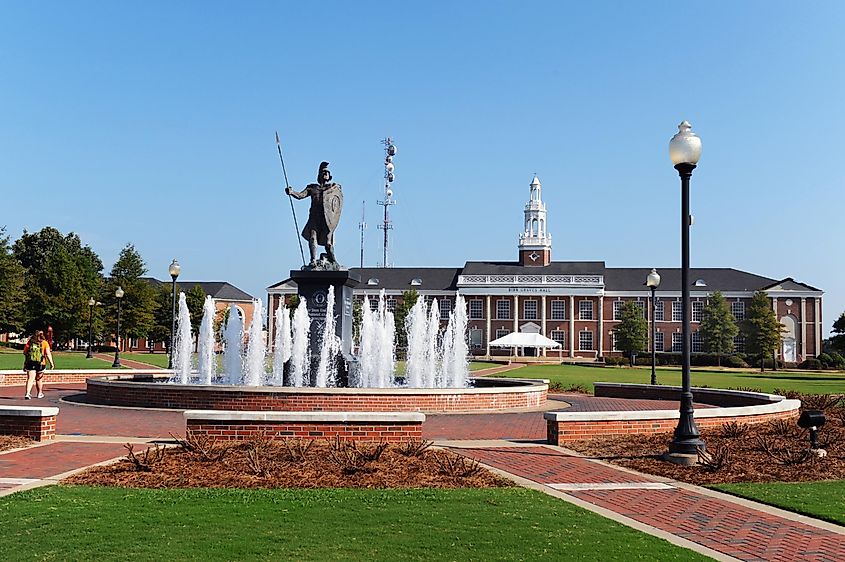
The Troy University International Arts Center, at the Janice Hawkins Cultural Arts Park, displays two hundred replica terracotta warriors created by Huo Bao Zhu, arranged to echo the famous excavations in Xi'an. Inside, the Fred “Nall” Hollis Museum traces fifty years of the Troy-born artist’s career through sketches, paintings, mosaics, and watercolors.
The Pioneer Museum of Alabama assembles historic structures and demonstrates blacksmithing, candle making, and rope making during seasonal programs. An 1881 logging locomotive, grist mill, general store, and one-room schoolhouse complete the outdoor exhibits. Nearby, the Conecuh River Depot Military Museum holds memorabilia donated by veterans from World War II through Operation Iraqi Freedom. Pike County Lake provides fishing piers, a boat ramp, and an archery park set within surrounding woodlands.
Anniston

Northeast Alabama’s hills frame Anniston, where museums and trails give the city a steady pace through the seasons. The Anniston Museum of Natural History introduces visitors to prehistoric life with dinosaur casts and aquatic reptiles in the Dynamic Earth hall. Additional galleries present Birds of the Americas, including extinct passenger pigeons and ivory-billed woodpeckers in dioramas that are among the oldest of their kind in the country. The collection also includes Egyptian mummies from the Ptolemaic period.

The Freedom Riders National Monument preserves two sites connected to the 1961 attack on an integrated bus of civil rights activists. Markers and exhibits explain the events that shaped the national movement for equality.
Outdoors, Bains Gap Waterfall tumbles over two tiers of rock inside the Choccolocco Wildlife Management Area. Shallow pools form at the base during warm months, and the short loop trail crosses wooden footbridges and passes an old chimney from the former Fort McClellan training grounds. Michael Tucker Park stands at the southern end of the Chief Ladiga Trail and provides a primitive campground, gazebo, and paved access to the nearly forty-mile route that runs north toward Georgia's Silver Comet Trail at the state line.
Orange Beach
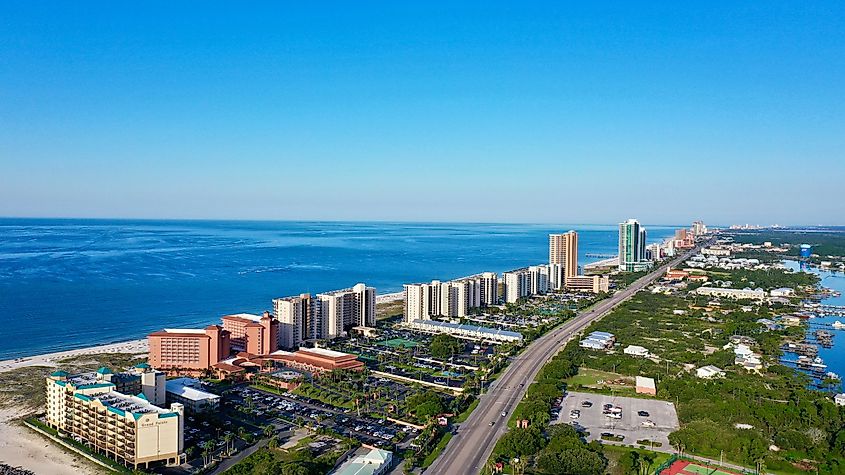
Orange Beach is where sugar-white beaches meet the Gulf as Florida's panhandle ends and Alabama begins. The Flora-Bama restaurant reflects this shared identity with grilled oysters topped with bacon and smoked Gouda, gulf grouper sandwiches, and crawfish rigatoni in a Creole Gouda cream. The well-known Bushwacker blends rum with ice cream into a frozen cocktail that has been served since 1964, when stages on the property began hosting live music throughout the year.
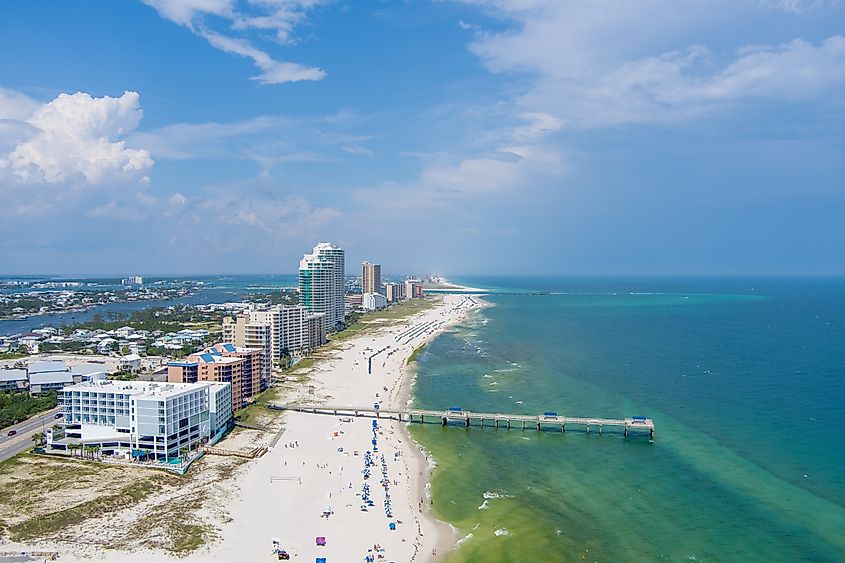
Cotton Bayou Public Beach Access and Alabama Point East provide boardwalks that lead to the shore, where families settle under umbrellas and wade into calm waves. The Wharf entertainment district brings together boutiques, bakeries, and candy shops, and nearby restaurants serve seafood from local waters.
Boat touring companies such as Dolphins Down Under take families into back bays and the open Gulf aboard catamarans with viewing panels in the floor. Captains point out dolphins surfacing, ospreys fishing overhead, and stingrays moving below during ninety-minute trips. The Coastal Arts Center of Orange Beach stands along Wolf Bay with a glass-blowing studio called The Hot Shop, where afternoon classes guide families in shaping paperweights, starfish, and flowers from molten glass.
Elberta
North of Orange Beach, Elberta draws visitors with roadside art, local history, and wooded attractions. Its largest landmark, Bamahenge, rises twenty-one feet in a forest clearing near Barber Marina. Artist Mark Cline built this fiberglass Stonehenge replica in 2012 and aligned it with the summer solstice sunrise, similar to the astronomical purpose of the original monument. Nearby, the Dinosaurs in the Woods display includes life-sized models of a triceratops, tyrannosaurus rex, stegosaurus, and brontosaurus set among the trees.
More whimsical pieces appear throughout the property, including the armor-clad Knights in the Woods tucked between pines. Neptune’s Fountain anchors a traffic circle with the Roman god of water at its center, surrounded by seahorses and other mythical figures. The fifty-foot Lady in the Marina floats in Bay La Launch with her knees rising above the water as if resting in a bath.
Along U.S. Highway 98, the Baldwin County Heritage Museum fills a whitewashed wooden house with antique farm equipment, tools, and early twentieth-century photographs. Restored structures on the grounds include a general store, one-room schoolhouse, church, and potato shed that reflect rural life from the past century.
Dauphin Island
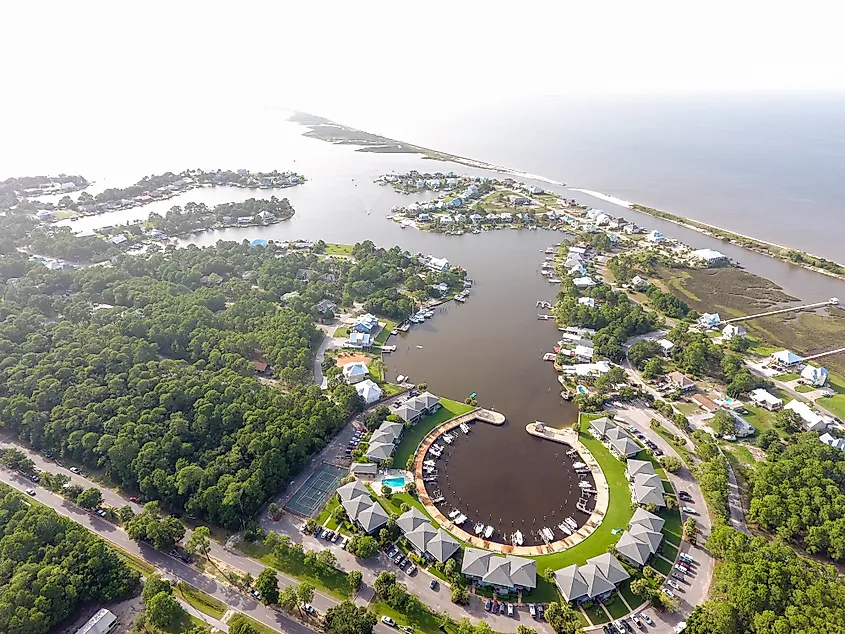
Migratory birds arrive on Dauphin Island with the same eagerness visitors feel for its breeze and soft gulf light. This shared pull gives the Audubon Bird Sanctuary a lively atmosphere in spring and fall. Warblers, tanagers, and thrushes pass through the pines and wetlands during those seasons, and boardwalks guide visitors toward quiet views of these brief stops before the birds continue their long journey.
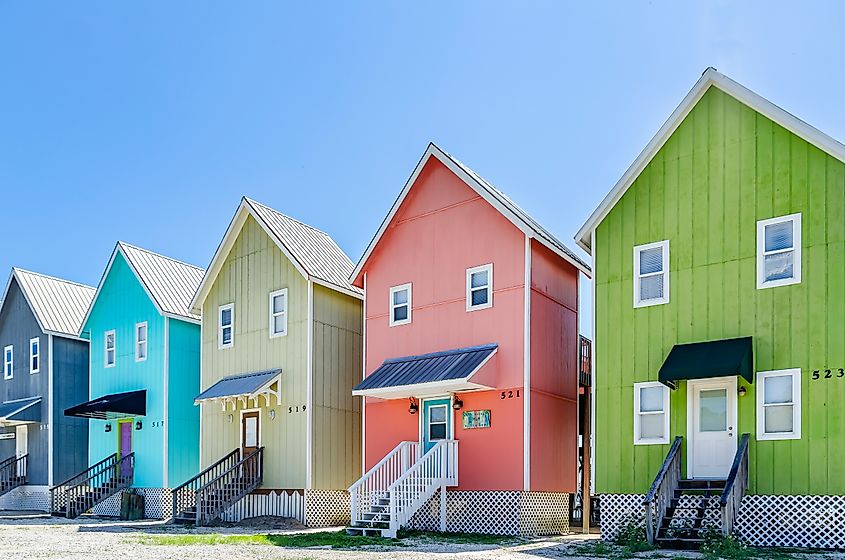
The Gordon Persons Bridge links the island to Mobile, and the Mississippi Sound spreads toward the horizon across the open water. Beneath the surface, the Gulf of Mexico reveals marine grass beds and reefs that appear through clear tides. The Alabama Aquarium highlights these habitats through living displays, and its adjoining labs provide close study of coastal species.
Fort Gaines and the hardy vegetation around it shape the eastern end of the island, with masonry walls that recall early coastal defense. West End Public Beach contains long stretches of white sand that brighten the Gulf Coast of the United States. Offshore, the Sand Island Lighthouse stands out across the gulf with a steady presence that becomes more distinct in the late afternoon light.
Fort Payne

Lookout Mountain’s foothills welcome visitors to Fort Payne, a northeastern Alabama community once known for hosiery mills that supplied half the socks worn in America. The pink sandstone Fort Payne Depot Museum shows the late nineteenth century, when railroads shaped the mining boom. Inside, its three rooms contain antique items, military uniforms, Native American pottery, baskets, and 1913 handcrafted dioramas. Outside, a red Norfolk Southern caboose holds a miniature railroad village painted by community members. Nearby, the Alabama Fan Club and Museum displays gold records, stage costumes, and childhood photographs of the hometown band.
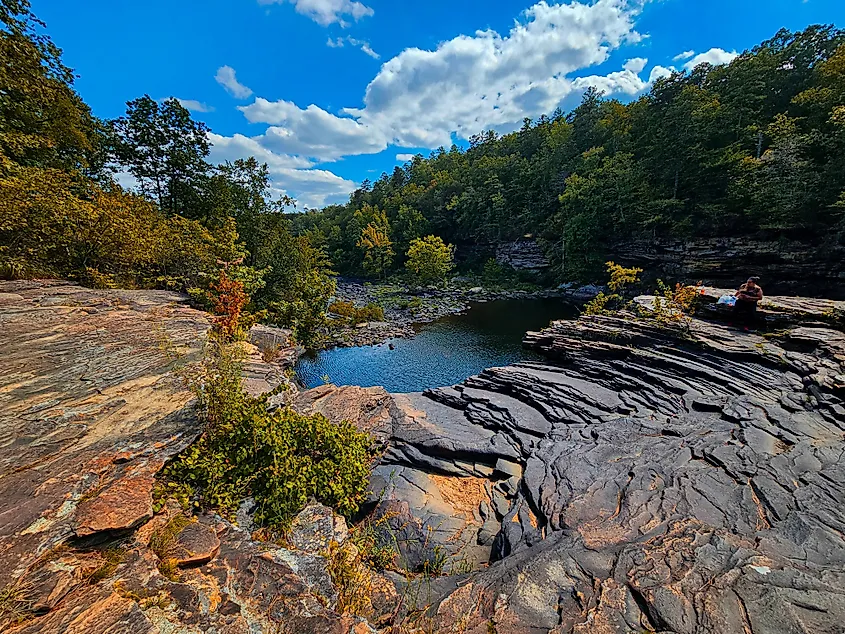
Little River Canyon National Preserve spans forested uplands where the river has carved through sandstone for millennia. The Canyon Rim Parkway includes overlooks at Wolf Creek, Eberhart Point, and Crow Point. Little River Falls drops into the gorge, and Grace’s High Falls appears after seasonal rains. DeSoto State Park adds trails, waterfalls, and an Olympic-size pool. The Chief Ladiga Trail continues north through Weaver, Jacksonville, and Piedmont and links to Georgia’s Silver Comet Trail.
Alabama's Scenic Soul in Full View
Alabama’s sense of place grows from its landscapes, communities, and layered history. The towns above reflect this in different ways. Dauphin Island brings coastal quiet, while Orange Beach adds boardwalks, family outings, and steady waterfront activity. Selma highlights civil rights landmarks, and Anniston and Elberta blend museums, outdoor sites, and creative installations. Troy places art and regional history on shared ground, and Mountain Brook adds gardens, zoos, and shaded creek paths. Fort Payne anchors the northeast with canyons, waterfalls, and museums tied to its industrial past.
Together, these towns form a broad picture of Alabama through settings and stories shaped by each place.
